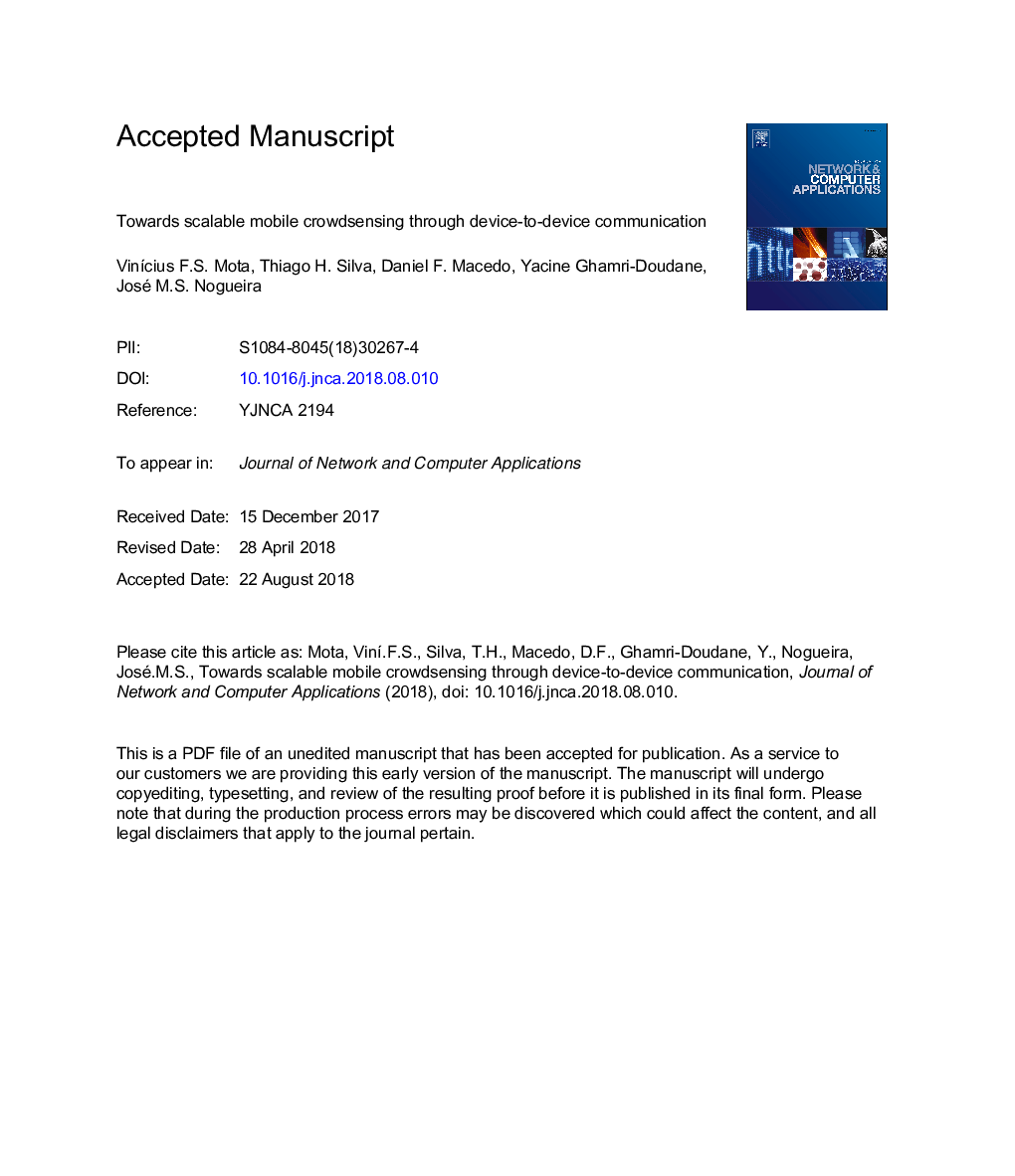| Article ID | Journal | Published Year | Pages | File Type |
|---|---|---|---|---|
| 10132633 | Journal of Network and Computer Applications | 2018 | 17 Pages |
Abstract
In mobile crowdsensing, users have a central role providing sensed data using their portable devices. Mobile crowdsensing applications have become quite popular nowadays. However, these applications can be bandwidth eager, big battery drainers, and may demand intensive network usage, which could exceed the allowance of users' mobile data plan. All these aspects may prevent users to contribute sensed data and also get valuable information from the service, which can impact the sustainability of the system. The Device-to-Device (D2D) communication paradigm arises as an approach to relieve data traffic generated by these applications, helping to let the system more sustainable. For instance, devices with a more reliable network connection can offload the network by disseminating data to other devices through D2D communication. However, mobile crowdsensing and D2D communication assume that users cooperate and allow their portable devices to be used for sensing and communication. In this work, we address the cooperation problem in the context of D2D communication to enhance mobile crowdsensing platforms. We first discuss how D2D communication can enhance mobile crowdsensing. Next, we propose and evaluate a general framework joining mobile crowdsensing and D2D communication. This framework abstracts applications defined by the sensing platforms, it decides the communication mode - whether infrastructure or D2D - and which incentive mechanisms must be used to engage participants to cooperate. We show evidence that this new approach could lead to a more sustainable mobile crowdsensing usage.
Related Topics
Physical Sciences and Engineering
Computer Science
Computer Networks and Communications
Authors
VinÃcius F.S. Mota, Thiago H. Silva, Daniel F. Macedo, Yacine Ghamri-Doudane, José M.S. Nogueira,
